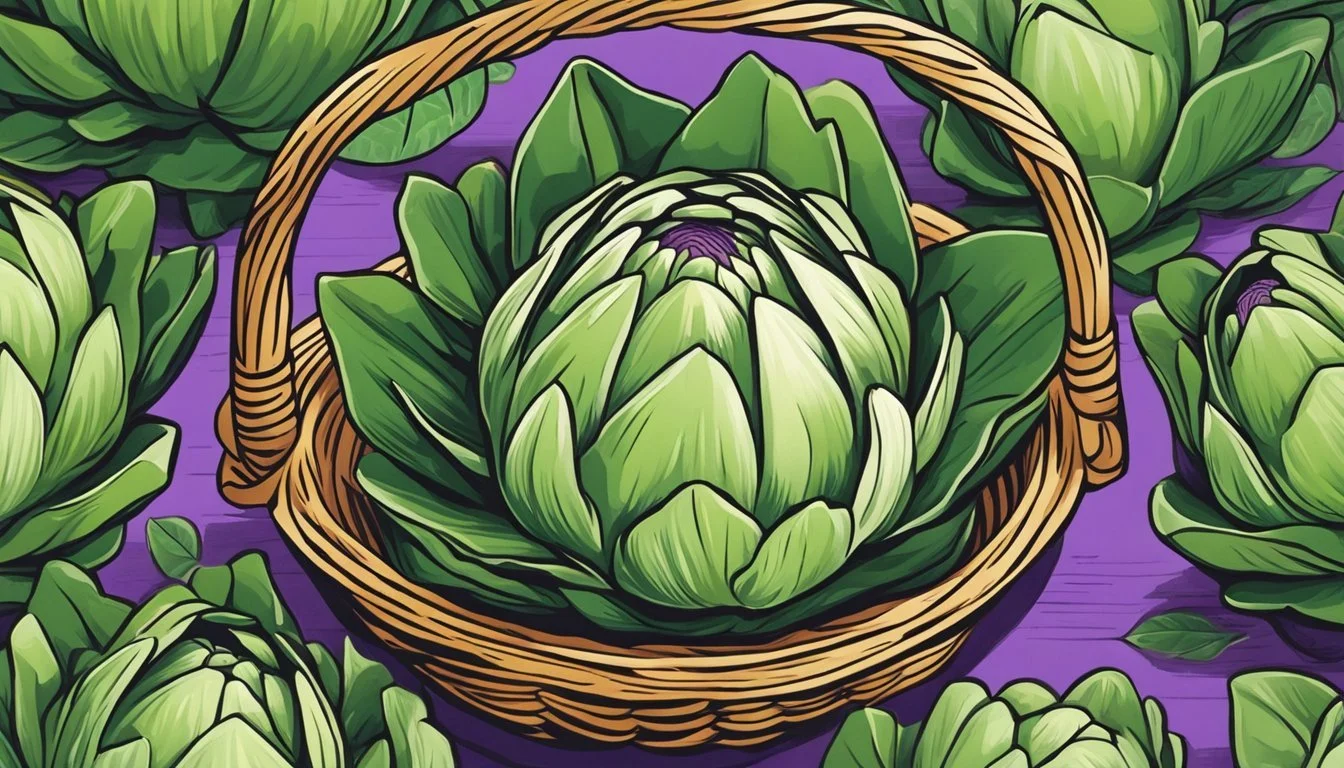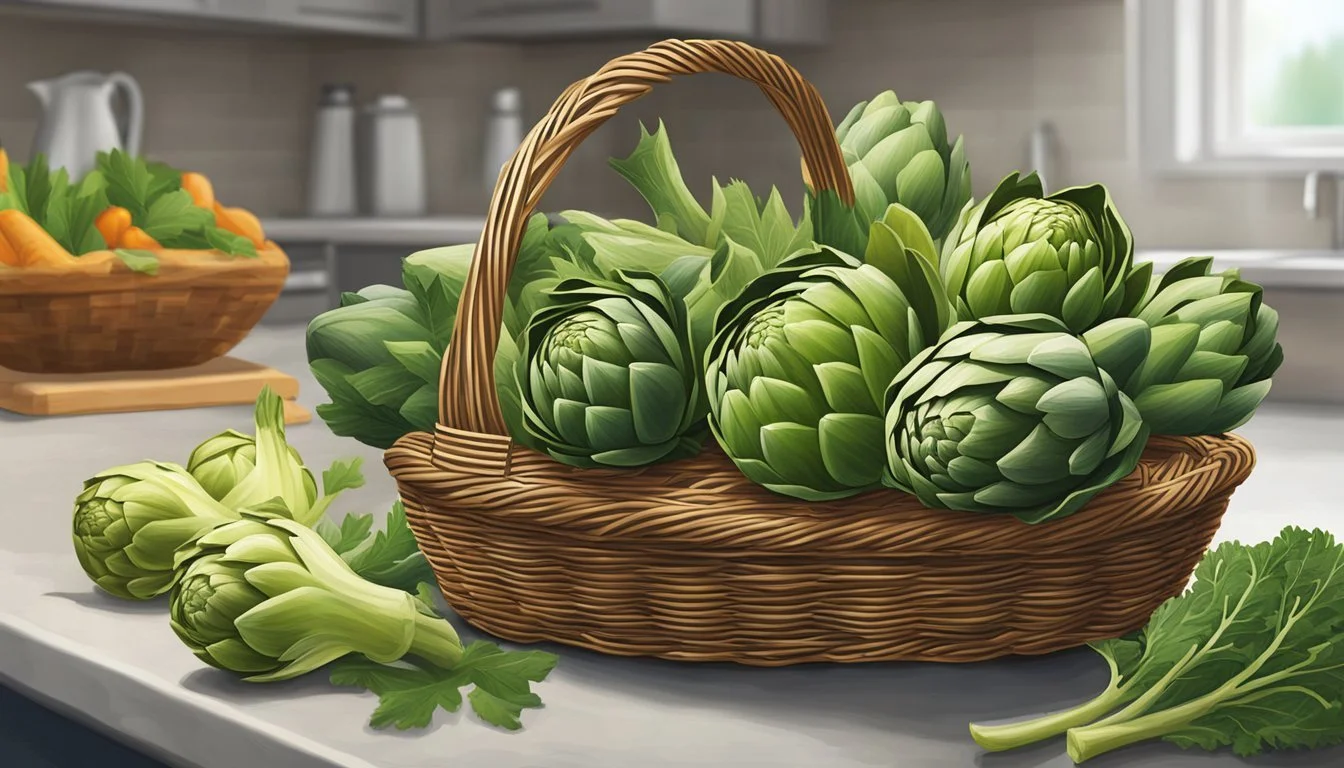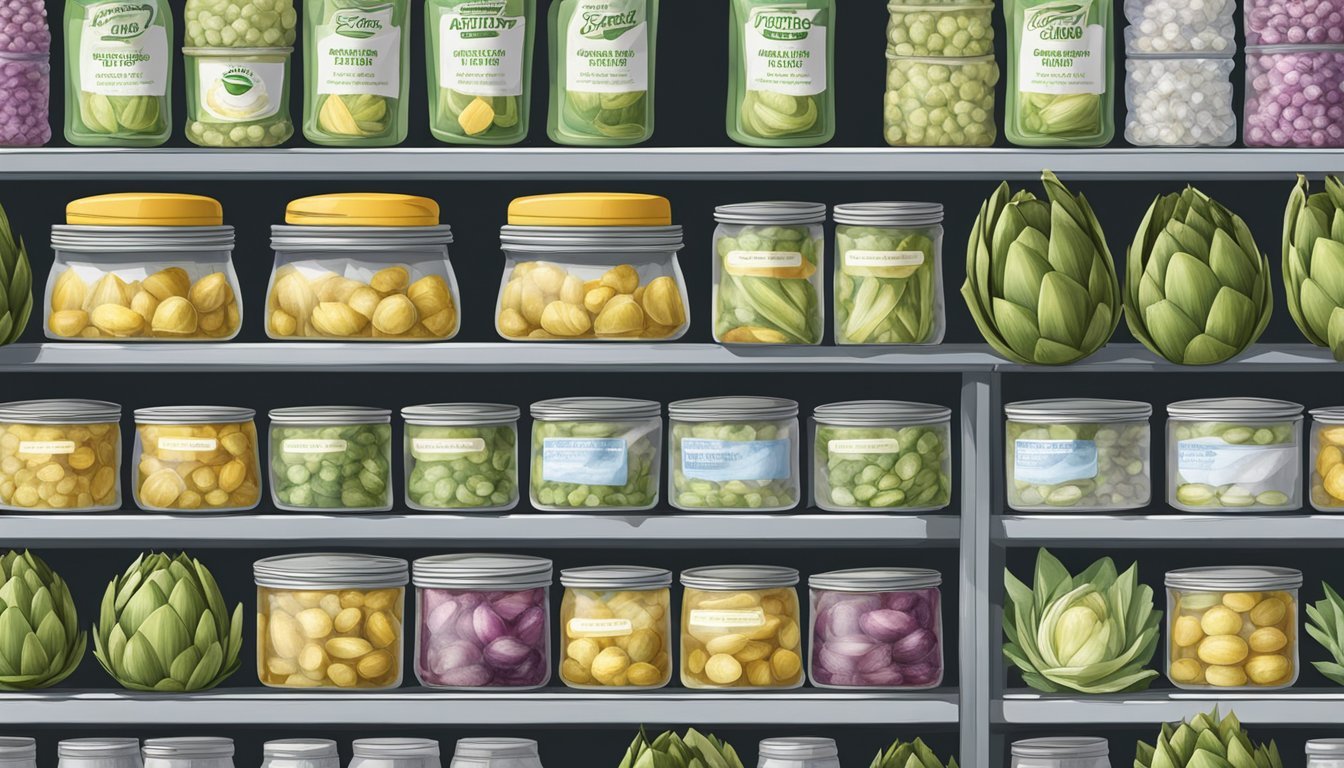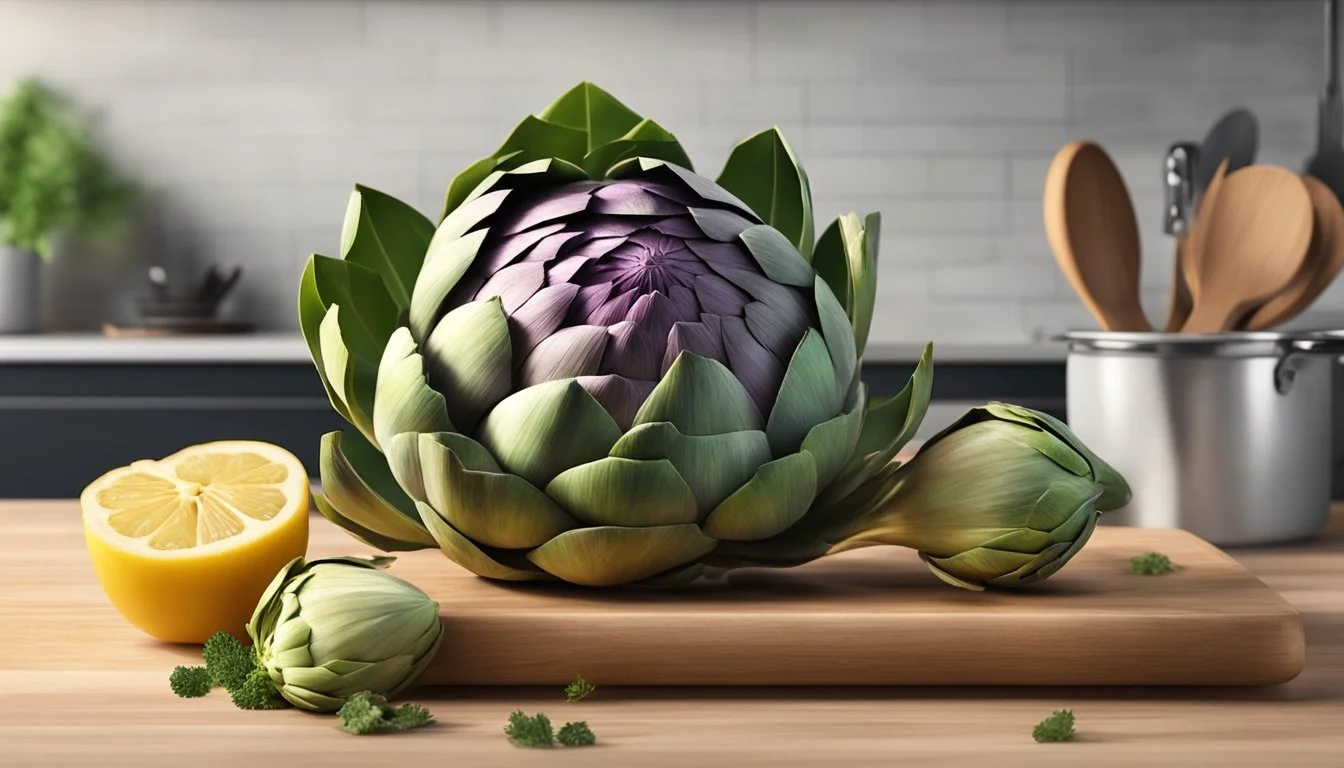How Long Do Artichokes Last?
Shelf Life and Storage Tips
Artichokes (What wine goes well with artichokes?), with their distinctive taste and nutritional benefits, are a versatile ingredient in many dishes. Knowing how to store them properly is essential to maintaining their quality and extending their shelf life. They are relatively perishable compared to some other vegetables, but when stored correctly, artichokes can remain fresh and safe for consumption for varying periods, depending on the method of storage used.
At room temperature, artichokes typically last between 1 to 4 days, provided they're kept in a cool, dry place. Refrigeration can significantly extend their freshness, allowing them to last up to a week. For those interested in longer storage options, freezing artichokes is also a possibility; they can maintain their quality for around six months in the freezer. The key to maximizing the shelf life of artichokes is proper storage within the right temperature range and conditions.
Selecting Fresh Artichokes
When shopping for fresh artichokes, consumers should focus on the produce's freshness and appearance, ensuring they select the best quality for their meals.
Identifying Freshness
Consumers can gauge the freshness of artichokes by examining the leaves. They should be looking for leaves that are tightly packed and snap when bent. The color of fresh artichoke leaves should be a vibrant green, with no signs of browning or excessive wilting, which could indicate age or poor storage conditions.
Optimal Characteristics
When selecting fresh artichokes, one should also consider the weight and firmness. A heavier artichoke for its size generally indicates a fresher pick, as it suggests a higher water content, which correlates with freshness. The artichokes should feel firm to the touch, with no soft spots. After the purchase, it is recommended to store them in heavy-duty freezer bags to extend freshness, especially if they are not intended for immediate use.
Storing Artichokes at Home
Proper storage of artichokes can significantly extend their freshness and shelf life. Three effective methods include refrigeration, freezing, and immersing in water.
Refrigerator Storage
Storing artichokes in the refrigerator is the most common method. They should be placed in a plastic bag to retain moisture and stored in the crisper drawer or on a shelf where the temperature is cool. Artichokes can last in the fridge for up to a week, providing a cool, dark place that prevents dehydration and decay.
Keep artichokes dry before placing them in the bag.
Refrigerator temperature: 32-40°F (0-4°C)
Freezing Artichokes
Freezing artichokes is ideal for long-term storage and can keep them fresh for several months. Before freezing, blanch the artichokes to preserve texture and flavor. Blanching involves boiling for a few minutes and then quickly cooling artichokes in ice water. Once dry, place them in a single layer on a baking sheet, freeze them, and then transfer to an airtight container or freezer bag.
Dry artichokes thoroughly after blanching.
Store in freezer: 0°F (-18°C) or lower
Artichokes in Water
Artichokes can also be stored in water for a short period. The stem should be freshly cut to allow absorption and the artichoke should be placed upright in a container filled with an inch of water. This method is practical if artichokes are to be used within a few days.
Change water daily.
Cover the artichokes and container with plastic wrap to retain moisture.
By adhering to these storage tips, one can maintain the quality of artichokes for an extended period, ensuring that they remain a tasty and nutritious addition to meals.
Extending Shelf Life
Maximizing the shelf life of artichokes relies on methods that prevent spoilage and use proper preservation techniques. These best practices are pivotal for maintaining freshness and extending the utility of artichokes.
Avoiding Spoilage
Fresh artichokes: They are highly perishable vegetables, and their shelf life is contingent upon ideal storage conditions. To thwart the onset of mold and spoilage, they should be used within one week when refrigerated. The storage environment must be cool and dry, with temperatures preferably between 32-40°F.
Inspection: Regularly check for signs of mold or moisture, which can rapidly lead to spoilage.
Trimming: Trim the stems and remove any loose outer leaves before storage.
Lemon juice application: A light brushing of lemon juice on cut surfaces can prevent oxidation, which not only affects appearance but can also compromise freshness.
Proper Preservation Methods
Refrigeration:
Enclosure: Store in airtight containers or sealable plastic bags to retain moisture and prevent air exposure.
Paper towel: Wrapping artichokes in a damp paper towel before placing them in a bag can help preserve freshness.
Freezing:
Blanching: Before freezing, blanch artichokes to preserve color, texture, and taste.
Air removal: Store in airtight containers or freezer bags with as much air removed as possible.
Canned artichokes: Unopened canned artichokes have a significantly extended shelf life and can be preserved for several months in the pantry. Once opened, they should be transferred to airtight containers and refrigerated.
Signs of Deterioration
Recognizing when an artichoke has begun to deteriorate is crucial for food safety and quality. The section below will detail visual cues and changes in texture and smell that can indicate spoilage.
Visual Indications
Artichokes show several visual signs when they're no longer fresh. Users should look for:
Discoloration: Fresh artichokes should have a vibrant green hue. If brown spots or dullness in color appears, it may indicate the onset of spoilage.
Open Leaves: Leaves that are starting to splay outwards suggest the artichoke is past its prime.
Mold: Any white or green fuzzy spots would indicate mold growth and necessitate discarding the artichoke.
Texture and Smell
In addition to visual cues, the texture and odor are reliable indicators of the artichoke's condition.
Texture: Artichokes should feel firm to the touch. If they're soft or have become slimy, this is a sign of decay.
Smell: Artichokes that emit a foul or sour odor are likely compromised and should not be consumed.
Preparing Artichokes for Use
In this section, we will go through the essential steps to prepare artichokes for use in meals. Beginning with proper washing, it is followed by the necessary trimming and peeling techniques and finalized with cooking instructions to ensure the artichoke is ready to be enjoyed.
Washing Techniques
One must thoroughly wash artichokes to remove any debris and pesticides. A gentle but firm scrub under running cold water will suffice. Pat the artichokes dry to prevent any potential dehydration which could spoil their texture.
Trimming and Peeling
Trimming starts with cutting off the tips of the outer leaves, as they are tough and inedible. Use kitchen shears or a sharp knife for this step. Next, one should remove the stem, leaving about an inch if the recipe calls for its inclusion. Peeling the stem with a vegetable peeler makes it more palatable. The top of the artichoke, approximately the top inch, should also be cut off. If working with artichoke hearts, one must remove the outer leaves and scoop out the choke, the inedible fuzzy part located at the center.
Cooking Instructions
Before cooking, some prefer to blanch the artichokes to preserve color and texture:
Bring a pot of salted water to a boil.
Submerge the artichokes for approximately 30 seconds.
Immediately immerse them in ice water to halt the cooking process.
To fully cook artichokes, they can be boiled, steamed, or grilled until tender:
Boiling: Place them stem-up in a pot of boiling water, cover, and simmer for about 30-45 minutes.
Steaming: Put artichokes in a basket above an inch of boiling water, cover, and steam until leaves can be easily pulled off, roughly 25-35 minutes.
Grilling: Halve and remove the chokes, brush with oil, and place on a preheated grill for about 15 minutes, turning halfway through.
Cooking times may vary based on the size of the artichokes and the preferred method.
Utilizing Frozen and Canned Artichokes
For enthusiasts of artichokes, the convenience of frozen and canned varieties can be a gamechanger. They allow for flexibility in preparation and ensure that artichokes can be enjoyed year-round.
Thawing Frozen Artichokes
When using frozen artichokes, they must be properly thawed to maintain texture and flavor. To thaw, one should place the artichokes in the refrigerator overnight. If a quicker method is needed, immersing the sealed package in cold water can expedite the process. Avoid thawing artichokes at room temperature as it can lead to uneven textures and potential growth of harmful bacteria. It is important to gently pat them dry to remove excess moisture which could lead to a soggy result in recipes.
Incorporating Canned Varieties
Canned artichokes are a handy ingredient for a variety of dishes. When opening a can of artichokes, they should be drained and, if desired, rinsed to remove excess brine which can be salty. They are excellent for adding to salads, creating a savory artichoke dip, or incorporating into pasta dishes. Marinated artichokes, which often come in a seasoned oil, can be used straight from the can without additional preparation. It is essential to store any leftover artichokes in an airtight container in the refrigerator; they will last up to a week. Users should be diligent about checking for signs of spoilage before use.
Safety and Quality Considerations
When dealing with artichokes, it's essential to maintain safety and preserve the nutritional value by adhering to food safety guidelines and paying attention to best before dates.
Best Before Dates
Artichokes do not come with a best before date but assessing their freshness is crucial for both safety and quality. They generally last:
Room Temperature: 1-4 days
Refrigeration: Up to 1 week
Frozen: Approximately 6 months
Artichokes should be stored away from direct sunlight to prevent spoilage and to maintain their nutrition, which includes vitamins, fiber, antioxidants, and minerals.
Food Safety Tips
To ensure artichokes are safe to eat and avoid foodborne illness, follow these tips:
Inspection: Check for signs of spoilage like a foul smell or discoloration before consuming.
Refrigeration: Keep artichokes cold to prolong their freshness and retard the growth of bacteria.
Preparation: Clean them thoroughly under running water before cooking or storing.
Storage Container: Use an airtight container or plastic bag to store them in the refrigerator to maintain best quality.
By following these guidelines, artichokes can be enjoyed safely while preserving their desirable qualities.
Frequently Asked Questions
In addressing frequently asked questions about artichokes, the focus will be on practical guidelines for storage, preparation, and consumption. These tips will help maintain the vegetable's taste and extend its shelf life.
Storage Queries
Artichokes should be stored in a cool, dry place or in the refrigerator to preserve their freshness. At room temperature, artichokes typically last 1-4 days. When refrigerated in a plastic bag or container, their lifespan extends up to a week. If one opts to freeze artichokes, blanching them first is advisable, and they may last for around six months.
Uncooked and Cooked Storage:
Uncooked: Refrigerate in crisper drawer or a plastic bag for 7-10 days.
Cooked: Can last in the refrigerator for a few days; use an airtight container.
Preparation Tips
Prior to cooking or freezing, artichokes benefit from proper preparation. Raw artichokes can be paired with a dip, or prepared in various recipes. To reheat cooked artichokes, one can use a microwave or oven, ensuring not to overheat as it may affect their taste.
Blanching Before Freezing:
Blanching helps extend the freezer life of artichokes to six months.
Consumption Concerns
Determining if an artichoke has spoiled involves checking for signs of aging like a soft texture or a displeasing odor. One should consume artichokes in a timely manner to enjoy their best quality, as their taste and condition may deteriorate with time.
Signs of Spoilage:
Soft to the touch, dark spots, or an off smell indicate the artichoke is no longer fresh.









